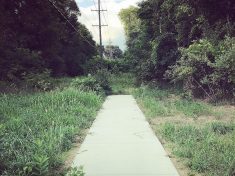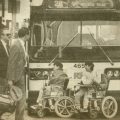
There’s a great park just a couple blocks from my house where I love to walk my dog. It only takes a few minutes to feel like I am out of the city into the wide open space, but the walk over can be quite treacherous because there are no sidewalks on my block. Dogs bark at me on my left while cars zoom inches away from me on my right. It’s become so much of a risk that I have started driving to local parks to avoid walking where the sidewalk ends. Living in a neighborhood that lacks basic infrastructure to support my safety is an inconvenience that I can work around. However, for the kids on my block who attend the nearby elementary school or the person next door who uses a motorized wheelchair, this poses a real risk to their health and safety.
Our physical environment is an important social determinant of health. Access to healthy and affordable food, transportation, safe housing, and even whether or not our communities have sidewalks, all determine our access to care and opportunity to live a healthy life. These social determinants are also very racialized, meaning people of color are substantially more affected by them than white people. They are part of the reason that in Colorado, people of color self-report higher rates of fair or poor health than white Coloradans or that black children are almost three times as likely to be obese than white children. In Denver, low-income individuals—many of whom are also people of color—are less likely to live in a neighborhood with sufficient sidewalks and their children are more likely to be overweight or obese.
WalkDenver, a nonprofit organization that advocates for policies and practices that lead to a more walkable Denver, has been working with residents and Denver officials for years to develop a plan for the city to build and maintain sidewalks. Missing sidewalks and unsafe streets discourage physical activity and may lead to poor health outcomes like obesity—so it’s important work. However, in the city of Denver where I live, residents are responsible for building and maintaining their own sidewalks. This is just not realistic in neighborhoods like mine where so many families are on fixed incomes.
Government institutions have a responsibility to create safe and healthy spaces for their constituents. However, without adequate funding and intentional prioritization, they continue to fall short in this role. Lack of government investment in low-income communities of color is nothing new. Our nation has a long and well-documented history of institutional racism that continues to this day. At Center for Health Progress, we know how important ZIP code and race are as predictors of health outcomes. By focusing on the root causes of preventable health disparities, and concentrating resources where the need is greatest, we can build neighborhoods where every kid can walk safely to school and every walk to the dog park is pleasantly uneventful.




